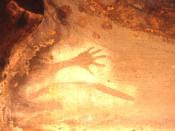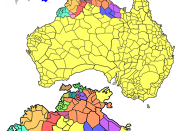Varieties of Australian English - Aboriginal English
Within English there are many variations; American, London, Scottish, Irish. There are also various Pidgins and Creoles. Some of these variations of English are recognised standard languages that stand alone, however they are still English. One of these is Australian English.
Australian English is a standard form of English. But what makes it so? [What gives it this status?] A standard variety of English is identified as [a style of English used consistently within an area.] Because Australian English is used consistently within Australia it is a Standard English variety.
Even though this means there are many different variations of English, these too can be divided into dialects. These are variations of Australian English itself and include Broad Australian, Cultivated Australian, Metropolitan Australian, Rural Australian ad many ethnolects as well. One of these varieties is Aboriginal English, which is an intriguing mix of Aboriginal dialect and English.
Aboriginal English started when British settlers came to Australia and encountered the Aboriginal people.
Both peoples desired communication, however two problems were presented; not only was the Aboriginal language incredibly different to European ones, but there are many different Aboriginal languages within Australia.
The settlers only encountered the variety spoken by those around Botany Bay first, and thus it was used to create a Pidgin English. However, other variations of Aboriginal dialect have since been encountered and resulted in more variations of Aboriginal English.
Pidgin is a mix of two languages, in this case English and Aboriginal, which results in a hybrid language with aspects of both. The Pidgin created by the settlers and the aboriginals was then passed from parent to child. Once this Pidgin was learnt by two or more generations it became a Creole, and then continued to be used...


